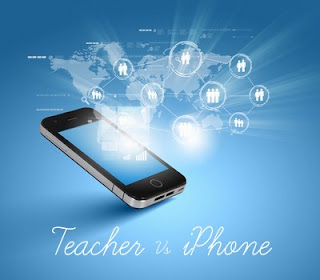You can’t turn off the internet. You can’t reprogram the brain or change the tech usage habits of someone who, from an early age, has been accustomed to constant connection through and with technology. Today’s teachers grew up during the earlier periods of the “Information Age”, when newspapers, magazines, television, and radio all competed for their time and energy. The threat to education posed by attention drain from these older forms of media seems laughable when compared to stereotypical 21st century learners, whose attention is constantly pulled in countless directions.
Many of these “time sinks” (to coin an internet buzzword for an activity which uses up a significant, potentially even infinite, amount of time) are either centered around sociability or have a built-in social component, thus making them even more enticing for contemporary students. From Facebook, Twitter, and Pinterest to YouTube, Tumblr, and MMORPGs (Massive Multiplayer Online Role-Playing Games like World of Warcraft), there are countless competing websites designed to keep users engaged and keyboards clicking for as long as possible. Adults struggle with internet and technology overuse as well, as the rise of carpal tunnel syndrome, “BlackBerry thumb,” and other repetitive strain injuries demonstrates. Young people are more vulnerable to the lure of digital excesses, however, as their brains have and continue to develop and grow along with powerful and continually accessible web-based technologies.
How can traditional pedagogy possibly compete with all the iPhones quivering with unknown data in his or her students’ pockets? Can it be done at all? Here are a few possible starting points.
The future belongs to those who can rapidly absorb and integrate new information and turn on a dime to adapt their thought and conduct accordingly. The cliché of educating youth to become lifelong learners has never been more vital or true, and today’s youth enter the classroom already equipped to take in knowledge at firehose rates and strength. The key is to teach students to habitually direct their attention towards learning what will serve them and improve their lives, rather than allowing their minds to be carried off endlessly by the designers and “content producers” of websites that have been carefully engineered to entrance their users and hold their attention for as long as possible.
Many of these “time sinks” (to coin an internet buzzword for an activity which uses up a significant, potentially even infinite, amount of time) are either centered around sociability or have a built-in social component, thus making them even more enticing for contemporary students. From Facebook, Twitter, and Pinterest to YouTube, Tumblr, and MMORPGs (Massive Multiplayer Online Role-Playing Games like World of Warcraft), there are countless competing websites designed to keep users engaged and keyboards clicking for as long as possible. Adults struggle with internet and technology overuse as well, as the rise of carpal tunnel syndrome, “BlackBerry thumb,” and other repetitive strain injuries demonstrates. Young people are more vulnerable to the lure of digital excesses, however, as their brains have and continue to develop and grow along with powerful and continually accessible web-based technologies.
How can traditional pedagogy possibly compete with all the iPhones quivering with unknown data in his or her students’ pockets? Can it be done at all? Here are a few possible starting points.
Understand the mind of the digital native:
Consultant and thought leader Linda Stone has a term for the ongoing cognitive split created by the surge in digital media and devices: Continuous Partial Attention, or CPA. CPA is distinctly different from multitasking, which is the process of working on several projects at once, each with a distinct goal. Continuous partial attention is a mode of being in which someone is constantly connected, scanning, and busy staying up-to-date. It is a lifestyle, not a work style, and it is the norm for contemporary students.Survey students to gauge what’s working for them in your classroom:
Writer and speaker Marc Prensky has incorporated student panels in his talks for many years. He believes that simply asking students questions like, “What experiences in school really engaged you?” and “How do you use technology in school as opposed to outside of school?” These types of inquiries could be easily incorporated in classrooms at key points in the semester.Reframe technology as your ally:
When students in your classroom are visibly engrossed in text messaging at the expense of absorbing anything from your lecture, it can be challenging to remember that popular new technological devices can be just as popular when employed to serve your lesson plan. 21st Century Learners are experts at quickly mastering tech instruments and using them to extract information. You could even look at it this way: if you are not using technology to educate, you are failing to prepare your students for Workplace 2.0 which you are preparing them to enter.The future belongs to those who can rapidly absorb and integrate new information and turn on a dime to adapt their thought and conduct accordingly. The cliché of educating youth to become lifelong learners has never been more vital or true, and today’s youth enter the classroom already equipped to take in knowledge at firehose rates and strength. The key is to teach students to habitually direct their attention towards learning what will serve them and improve their lives, rather than allowing their minds to be carried off endlessly by the designers and “content producers” of websites that have been carefully engineered to entrance their users and hold their attention for as long as possible.
Author Bio:
Vince Aker is having trouble with his students paying attention to his lectures. He decides to learn more about current technology to see if he can come up with ideas that can help turn the attention of his students from their phones to him. 






Post a Comment